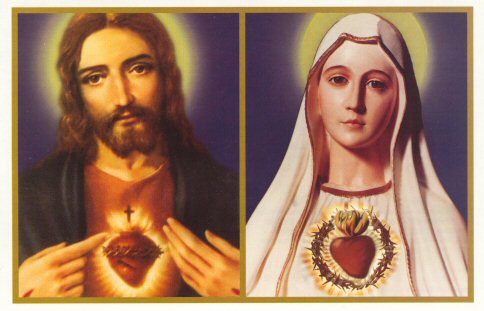
Have you been to a doctor lately? I went in March for what turned out to be a upper respiratory infection (fancy name for a head cold!). Since then I have gone to my primary several times for other things needing treatment, I've been referred to 3 other doctors, and had a endless series of tests! To paraphrase St. Mark, I have suffered greatly at the hands of many doctors and have spent all that I had!
Sunday's gospel tell the story of Jesus' healing two women: one old, one young. He is one his way to heal the daughter of Jairus, the synogogue official, when he is interrrupted by someone touching his cloak. Imagine being in the think of the crowds in mid-town Manhatten at Christmas time, being bumped and jostled by your fellow shoppers and asking your friends, "Who touched my coat?" They'd look at you as if to say "Everybody!"
That is the disiples reaction to Jesus when he asks "Who touched my clothes?" But it wasn't just that his clothes had been touched. St. Mark tells us that Jesus was "aware at once that power had gone out from him." He knew the touch had been a healing one. The woman's hemorrhage had stopped. She had hoped to touch his cloak, be healed and slip away.
Jesus had other plans. He knew that power had gone out from him, that someone had been healed physically. He also knew the healing wasn't complete, so he asks "Who touched my clothes?" to draw her out. She comes to him in fear and trembling and tells Jesus what she did. He says to her, "Daughter, your faith has saved you.
Go in peace and be cured of your affliction." Her hemorrhage had made her an outsider, ritually impure. Jesus restores he by calling her "daughter" and promising her peace. Healed of her disease and restored to fellowship, her healing is complete.
But now Jairus has received the tragic news that his daughter has died; might as well let Jesus get back to what he was doing. Did Jairus blame Jesus for the delay, for his daughters death? Sensing his fear, Jesus reassures him, "Do not be afraid; just have faith."
Arriving at what is now a house in full mourning, with people weeping and wailing, Jesus says, "Why this commotion and weeping? The child is not dead but asleep." Asleep? Why the country bumpkin preacher from Galilee thinks she's asleep? Would we be in mourning if she was just taking a nap?
Of course Jesus knows she's dead. It's just that to him death is so temporary that she might as well be asleep. He puts the mourners out of her room and he took along the child's father and mother and those who were with him, Peter James and John, and entered her room. This is for family; hers and his.You can hear the tenderness in his voice mingled with a rebuke of death as he says "Talitha koum," which means, "Little girl, I say to you, arise!" And she does. Then there were two more things to say to the family. First,he gave strict orders that no one should know this
and second, that she should be given something to eat. She's been dead, she must be hungry!
The woman with the hemorrhage Jesus calls "Daughter". The dead girl, he calls "little girl." If Jesus was to come to heal you, what would he call you? Maybe you're not dead--yet. Maybe you're sick in body, mind or soul. What ever your need. Jesus will call you softly and tenderly. He will call you daughter or son or little girl or mom or dad. He will call you out of your sickness, your need and into his family. That is why we are hear at this Mass: to worship our Father, to receive his Son and to be filled with his Holy Spirit. We are here to be the family of God.




